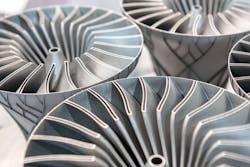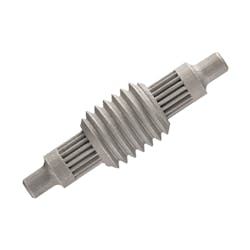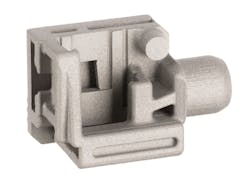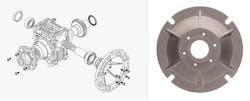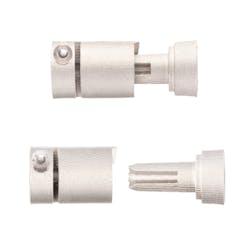Metal 3D Printing for Machine Design: An Industry Perspective
Download this article in PDF format.
Machine design involves the development, design, and production of machines. It is key to ensure machines run efficiently, produce consistent results, and can be easily repaired as components wear out or break.
Challenge
For simplicity, speed, and most importantly cost, machine designers strive to use as many off-the-shelf components as possible. Invariably, though, some parts must be custom-made—and therein lies most of the challenge.
Due to the relatively small volumes needed, custom parts are typically CNC machined, a process that can be expensive and time-consuming, due to limited machine shop resources and nonrecurring engineering (NRE) time and costs. This NRE usually consists of the necessity to create custom work holding fixtures for machining of complex parts, even if parts are being produced in low volume, leading to significant waste and added part cost.
Machine design firms may also face challenges related to equipment that is already operating—as parts wear out or break, firms need to be able to quickly manufacture replacement parts to get the machine back up and running while keeping per-part costs low and avoiding warehousing costs.
Solution
Additive manufacturing dramatically simplifies the process of creating custom parts. Because it doesn’t rely on tooling or fixturing, 3D printing often allows users to print parts faster and at lower costs than machining.
The technology also opens the door to parts with greater geometric complexity, these complex parts may be better suited for the application but generally cannot be justified with traditional manufacturing methods.
That increased complexity also enables assembly consolidation—the combining of several parts into fewer, multi-functional assemblies—which helps to simplify manufacturing and increase efficiency.
Metal 3D printing also streamlines the production of replacement parts, allowing companies to print exactly the part they need, when and where they need it, significantly reducing both machine downtime and reducing warehousing costs.
1. Assembly Consolidation
To simplify manufacturing processes, many assemblies are made up of easy-to-manufacture parts which are either held together with fasteners or welded.
Additive manufacturing, however, allows users to consolidate multiple parts into a single assembly, reducing costs and increasing efficiency.
2. On-Demand Manufacturing
Printing brackets and mounts not only speeds up their manufacture but gives designers more freedom to focus on optimizing their geometry for the particular application, rather than manufacturability.
3. Functional Prototyping/Pilot Runs
Manufacturing methods like casting, forging, and metal injection molding are ideal for mass production, but high cost and long lead times make them a poor choice for prototyping or low-volume runs. Printed parts can often achieve the same quality as those mass-production methods without the need for tooling, saving significant time and money.
Since printing eliminates the need for tooling, the part can easily be printed one day, changed and a new variation printed overnight.
4. High-resolution Printing of Complex One-offs
Because it builds parts using extremely fine featured—layers 50 to 200 µm thick for extrusion-based systems and 15 to 20 µm voxels for binder jetting systems—3D printing makes it easy to create fine features that may not be possible, or justifiable, with traditional manufacturing methods.
